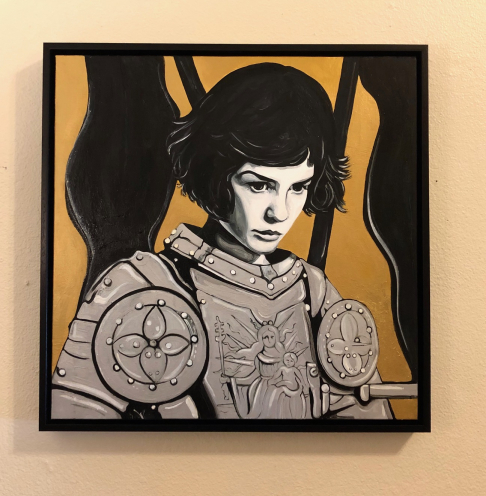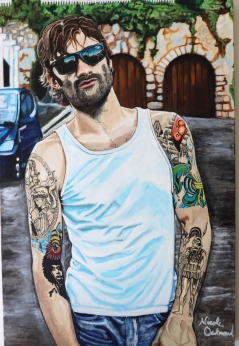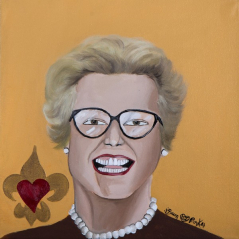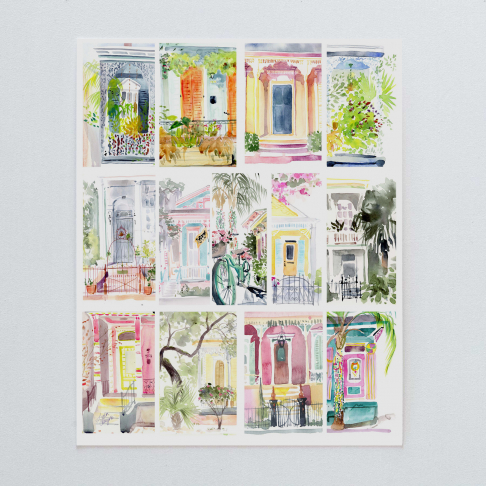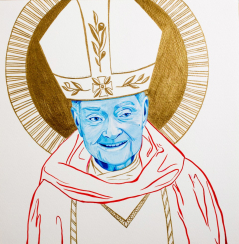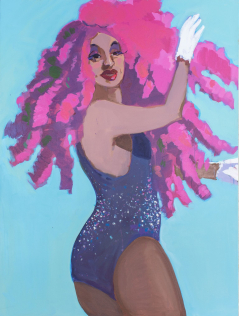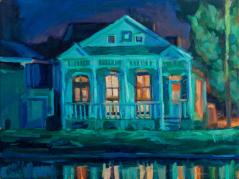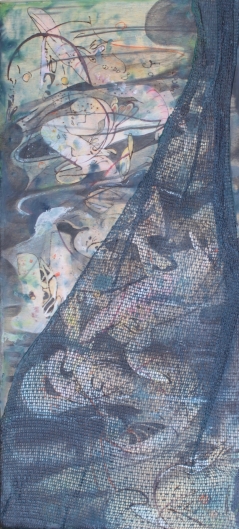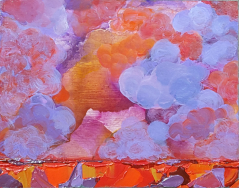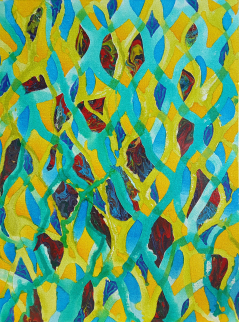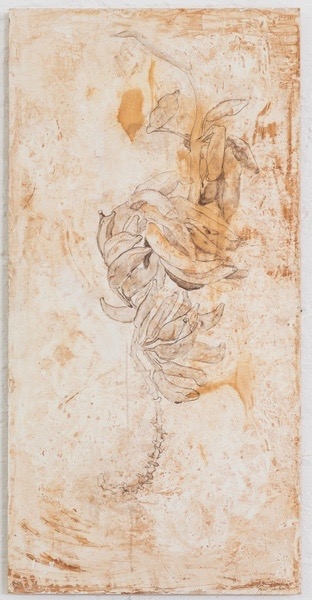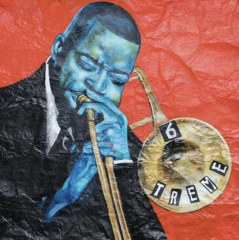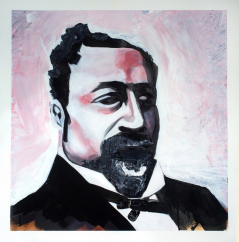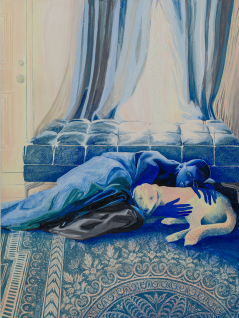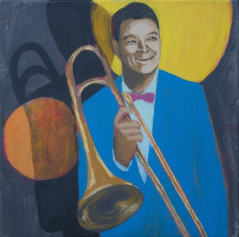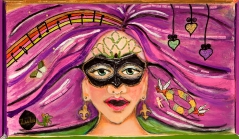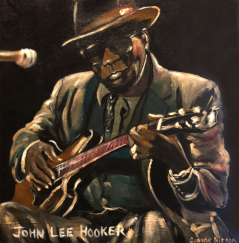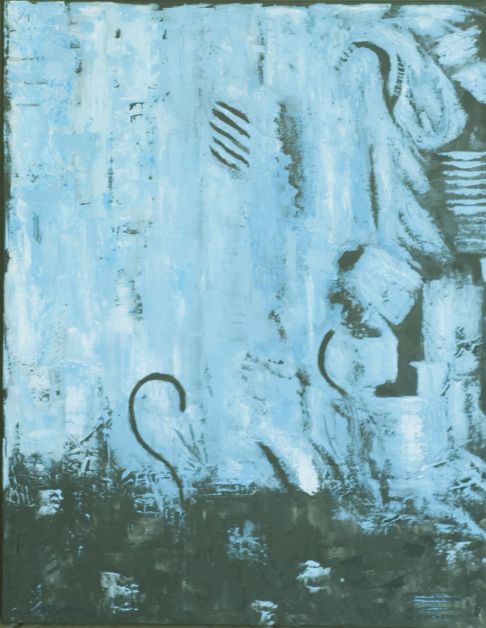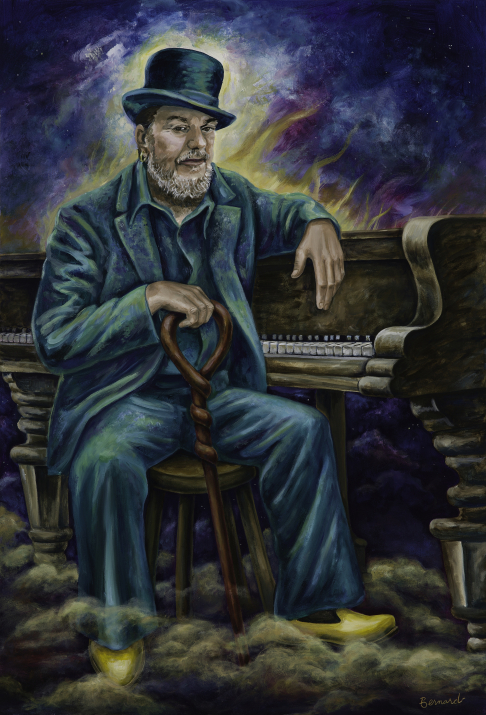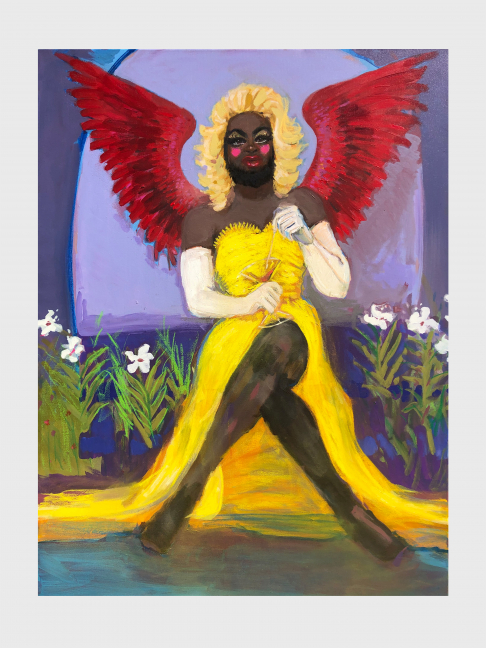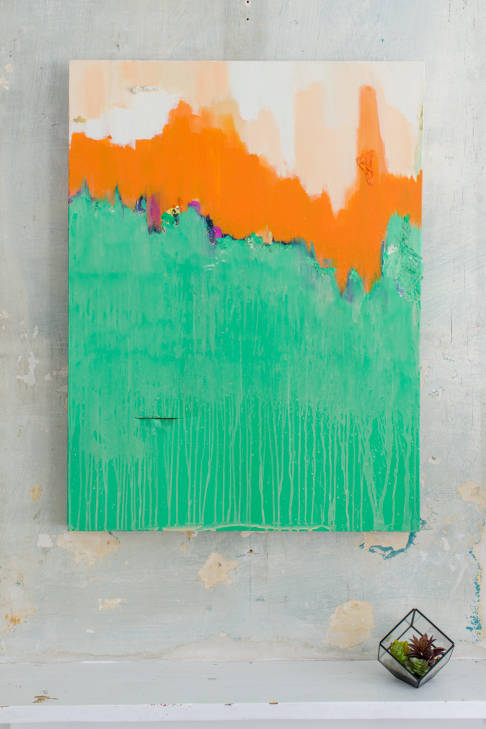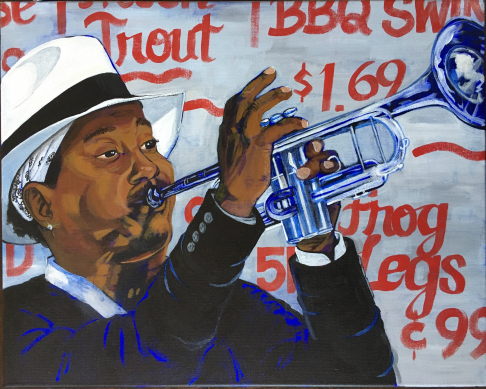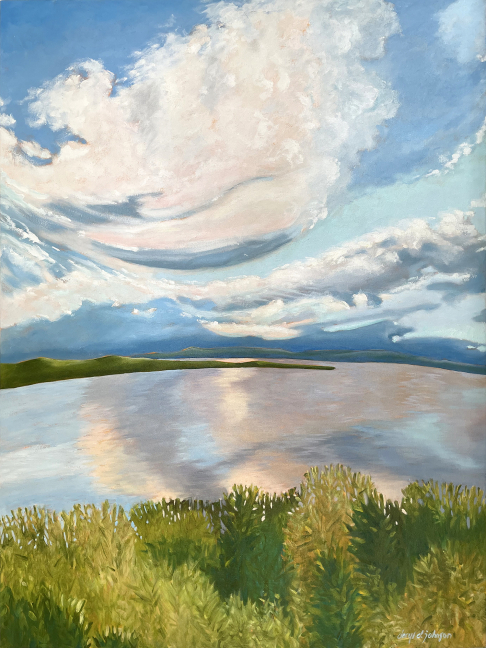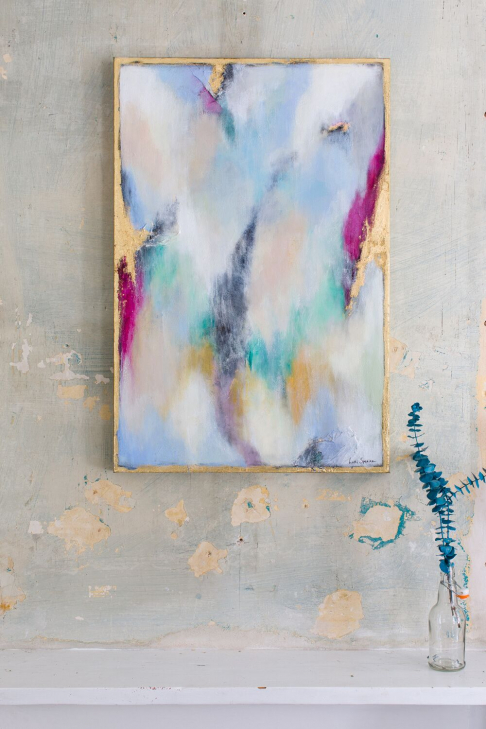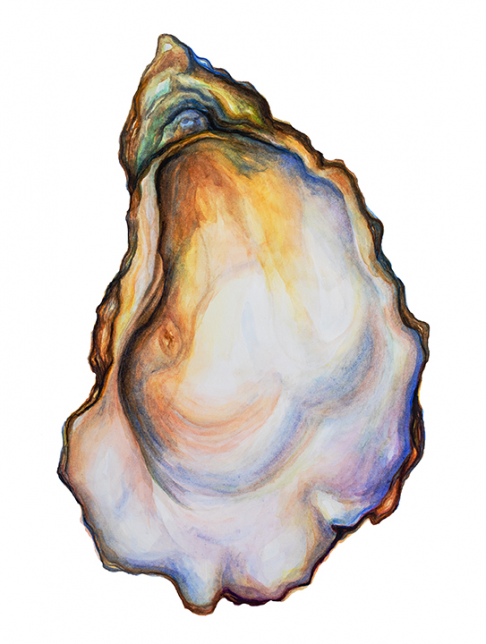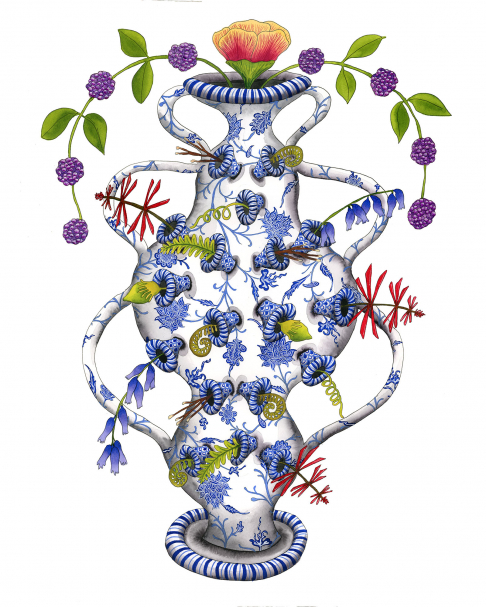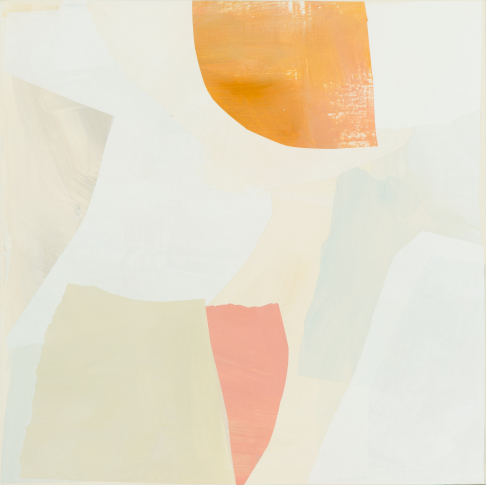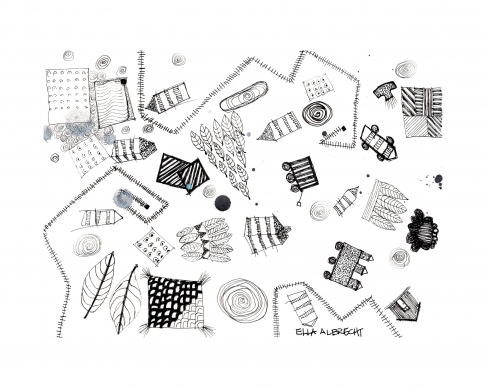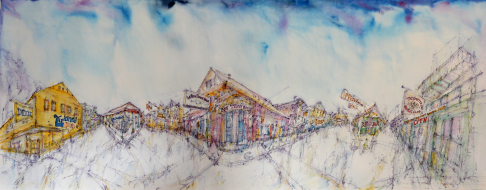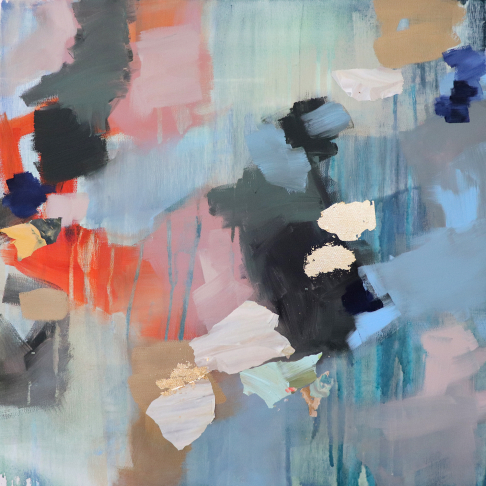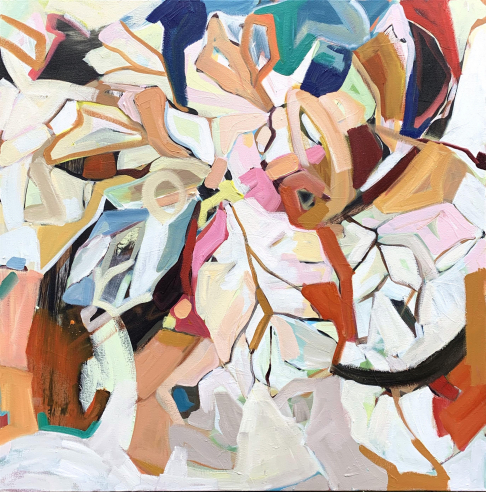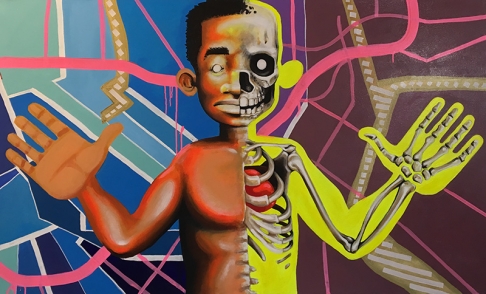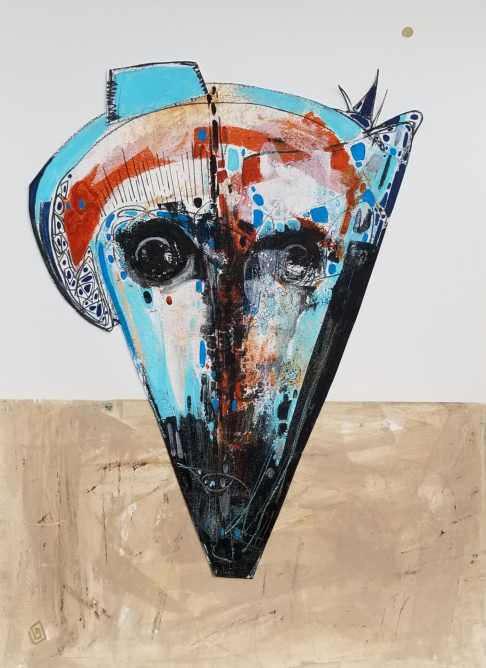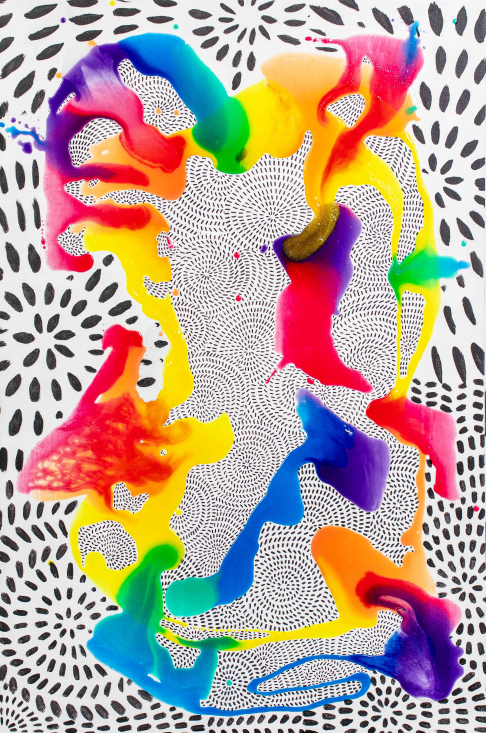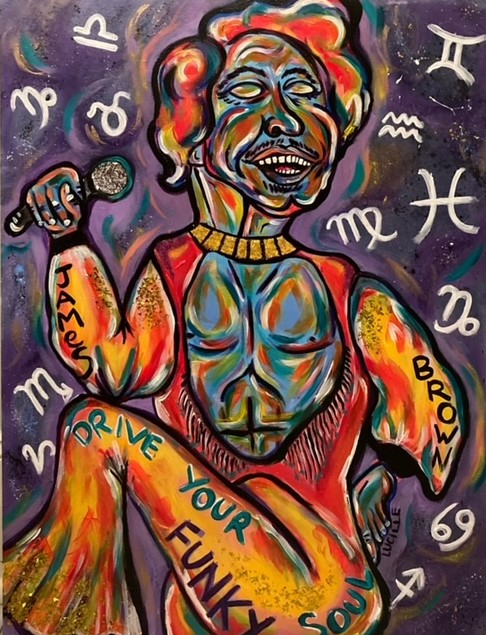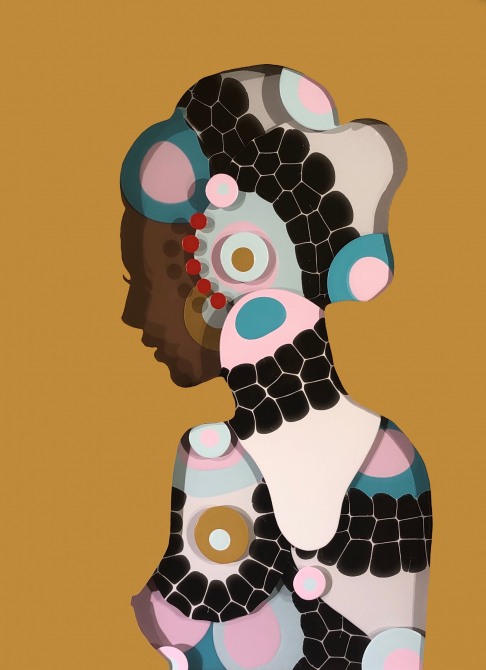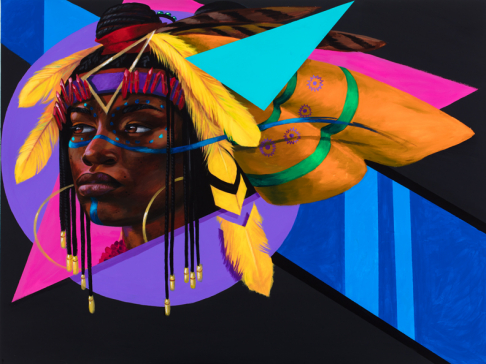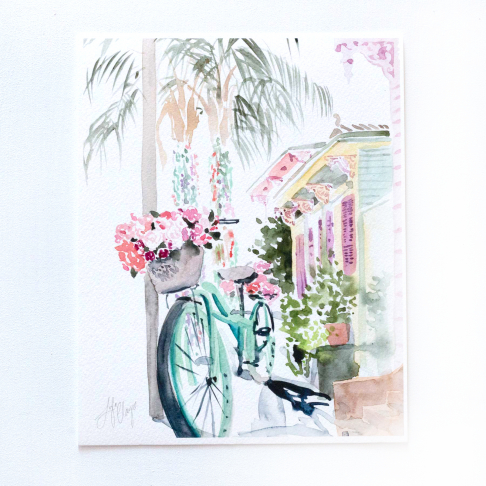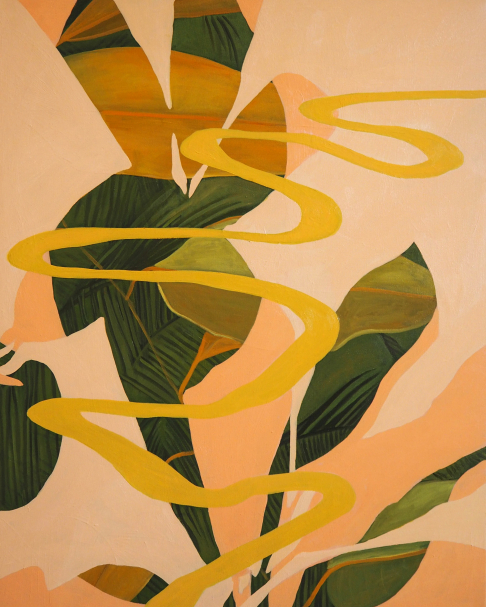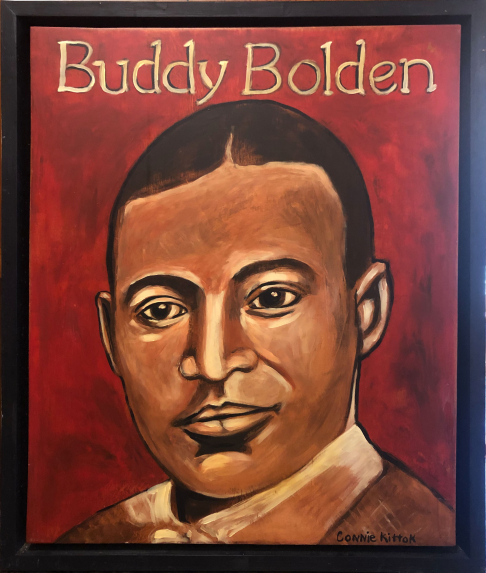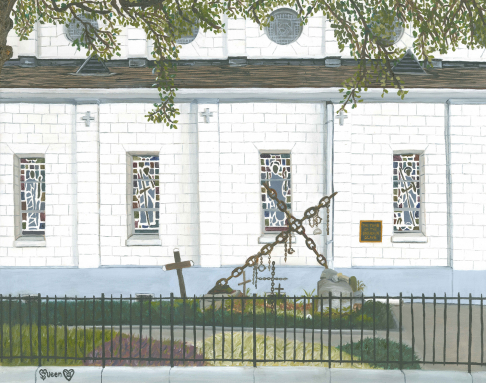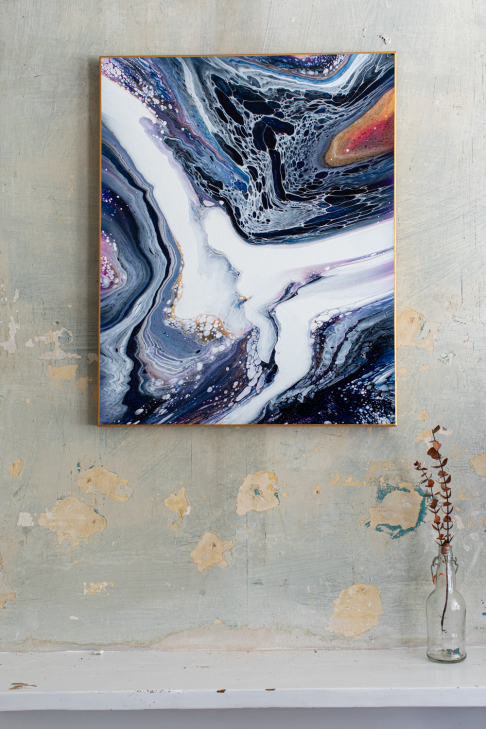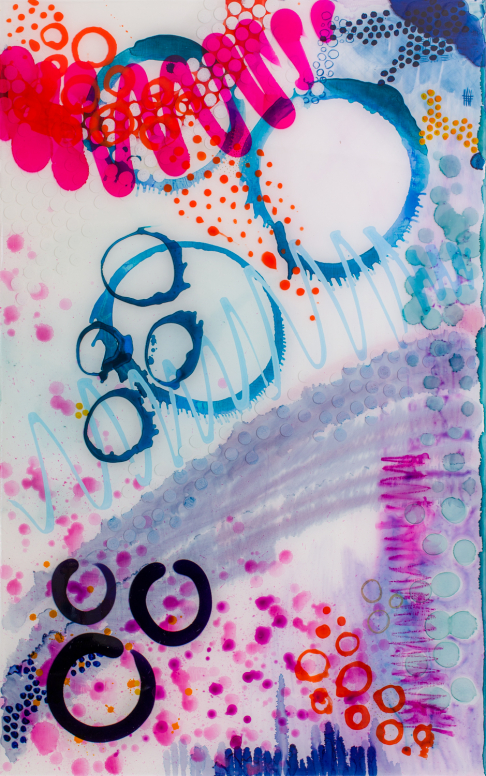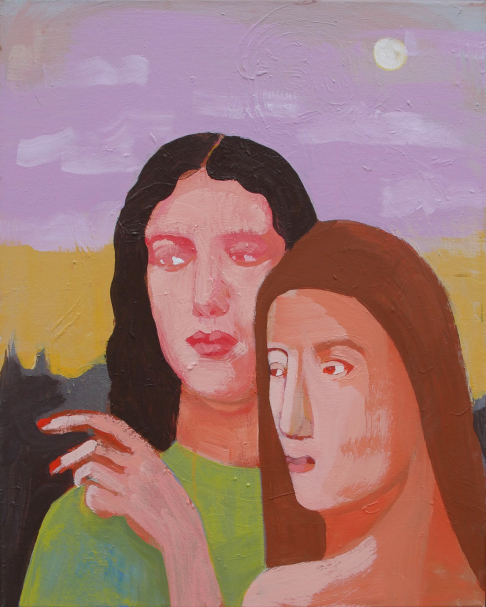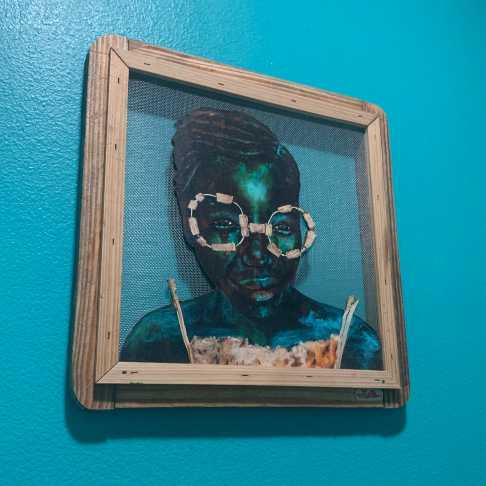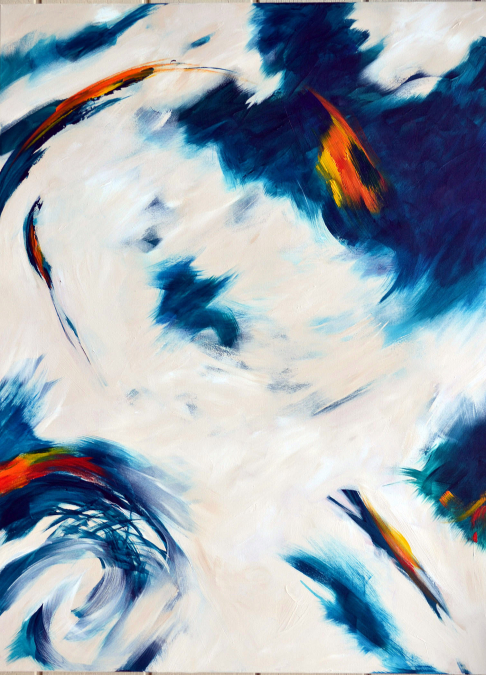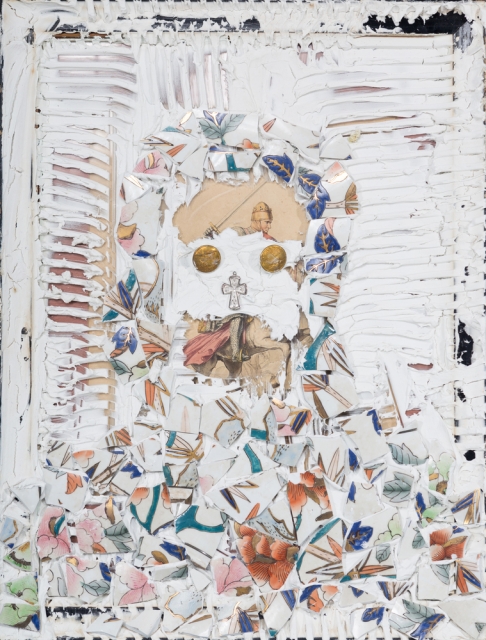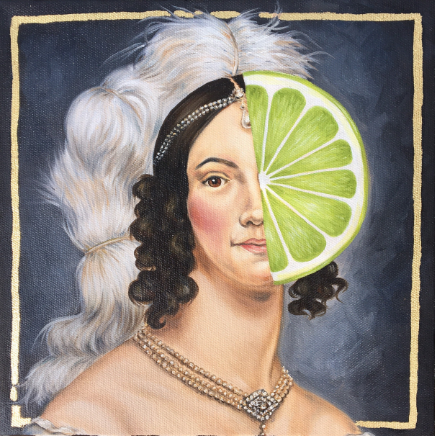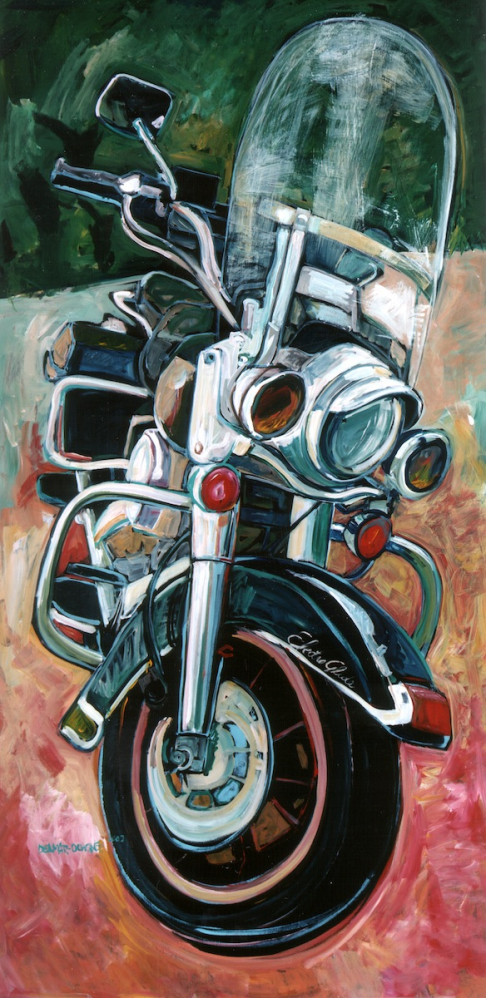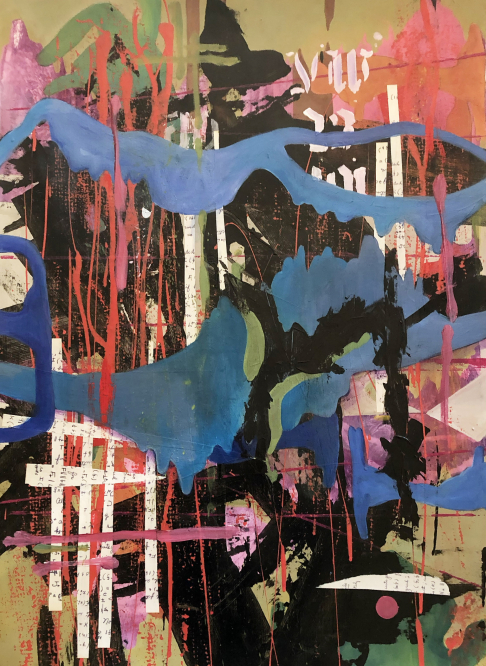After being assigned Joan of Arc for the 300 for 300 portrait series in 2018 I became a little obsessed with her story, and couldn’t stop painting her. As of yet I’ve done four portraits, and I still feel like I’m just getting started.
I chose Audrey Tautou as Amélie Poulain for my model because the character is young, girlish, fiercely determined, a bit mysterious and incredibly French. I was disappointed in the depictions of Joan of Arc as some womanly Aphrodite-type character with long flowing blonde locks. Joan was 17 when she set out to save France from the British, and her hair was cropped short in imitation of a men’s cut of the era (essentially a bob) and she dressed in men’s clothes to cross dangerous territories to gain an audience with Charles VII (at the time the Dauphin).
Once she gained his favor he gave her a suit of white armor, in which she is almost always portrayed. For the armor I chose the suit of Ferdinand I. On the breast plate is the Virgin Mary, holding her infant, rays of light bursting from behind her and holding a staff. Joan was, after all, deeply religious and I thought it fitting that her armor depict Christianity’s most pious and powerful woman.
The story of Joan’s triumphs in battle, and her visions of god are famous. What I did not know, and found stunning, was how cunning she was during her trial. At the time of her trial she was 19 years old, illiterate and had been held in captivity for over a year under threat of torture and rape. The trial was a farce—purely political and designed only to discredit and execute her. Her accusers and interrogators were a bishop, the vice inquisitor of France and the theology faculty of the University of Paris. And she stunned them all. The tribunal brought her up on over 70 charges, many of which concerned highly complex and nuanced ecclesiastic law. Despite that, she was able to evade all the theological and legal traps they set. The most famous exchange is an exercise in subtlety: "Asked if she knew she was in God's grace, she answered, 'If I am not, may God put me there; and if I am, may God so keep me.'" The question is nearly impossible to answer correctly, but she did. The Church said no one could be certain of being in God's grace. If she had answered yes, then she would have been charged with heresy. If she had answered no, then she would have confessed that she didn’t hear God tell her to go out and kick the English out of France. The court notary later testified that "Those who were interrogating her were stupefied."
She was so clever, in fact, that the court resorted to sentencing her for wearing men’s clothes, which was illegal at the time. Joan was held in a regular prison with male guards (not in a church prison as would have been normal at the time for a religious prisoner) and her men’s clothes and armor offered her some protection from rape, as they could be tied together to form a single piece of clothing. The skirts they insisted she wear would have left her extremely vulnerable. For this, and perhaps other reasons, she kept wearing men’s clothes. A heretic was essentially a repeat offender, and because she repeatedly was charged with cross dressing, she was deemed a heretic.
I had never heard about this before, and 500 years later it resonates with me deeply. Women and those who identify or dress as women are still controlled by what they are either legally or socially allowed to wear. Certain clothes give you power and safety, identity and purpose. Other clothes are dangerous. This detail of Joan’s life, along with every other example of her bravery, intelligence, and determination keeps me painting her.
